This stir-fry ramen with vegetables is a traditional Japanese dish of Chinese-style instant noodles served in a medley of fresh vegetables and rich soy sauce, topped with green onions, sesame seeds, and black pepper.
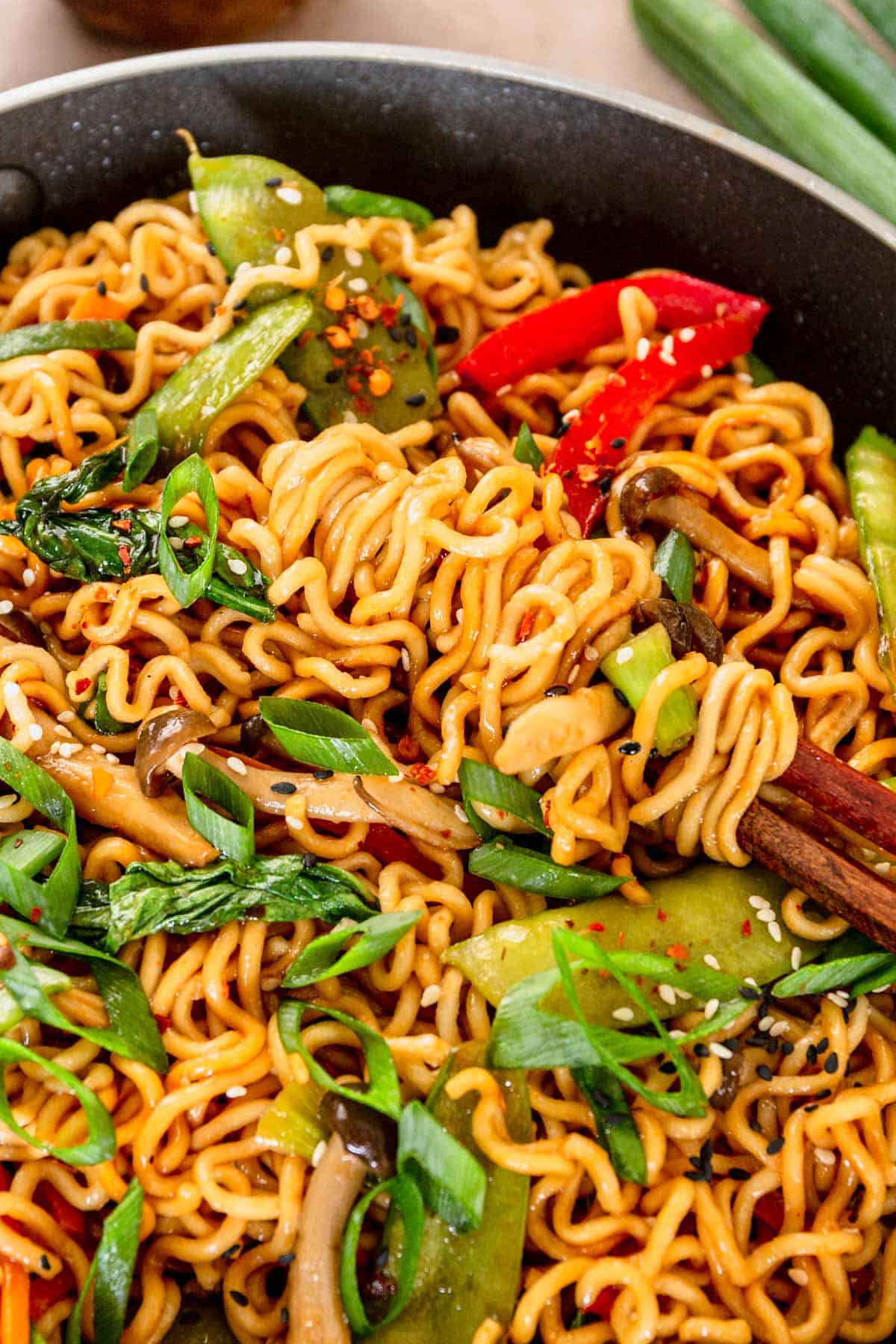
Like stir fries? Try our teriyaki Chicken and Broccoli or Ham Fried Rice next time.
Jump To
Ingredients
- Instant Ramen noodles - or fresh ramen noodles. Just follow the package instructions on how to cook them before adding them to the stir fry. Swaps include: rice noodles, egg noodles, lo mein noodles, spaghetti noodles or even spiralized zucchini can be used instead.
- Shimeji or shiitake mushrooms - Rinsed and dried with a paper towel. Cook whole or use sliced mushrooms. Substitute with sliced baby bella or button mushrooms.
- Cabbage - Bok Choy, Baby Bok Choy, or Napa are quite popular in these dishes. Napa cabbage or ''Chinese Cabbage'' is a type of cabbage with a mild, slightly sweet flavor and is often used in Asian dishes. It can be used in place of bok choy.
- Cooking oil - Sesame oil.
- Bell peppers - Use red peppers, green or yellow bell peppers, or a combination.
- Garlic - Fresh, minced, or garlic paste.
- Snow peas or edamame - Fresh or frozen.
- Carrots - Cut into matchsticks or bought pre-cut.
- Garnish - Top each serving with green onions or scallions, sesame seeds, and black pepper. This is optional.
- Stir fry sauce - combine oyster sauce (the thick kind), water, sesame oil, dark soy sauce (or low sodium soy sauce, and red pepper flakes (or cayenne pepper and red chili pepper).
- For gluten-free, use tamari, coconut aminos or gluten-free certified soy sauce, and oyster sauce.
- Oyster sauce is not vegan/vegetarian, for the vegetarian option I recommend looking online or in more niche-specific grocery stores.
For the full list of ingredients, please scroll down to where you'll find the recipe card.
How To Make Ramen
In a small bowl, whisk the sauce ingredients until combined.
The sauce will separate a little due to the sesame oil, but it is fine, whisk until most of it is combined. Set aside.
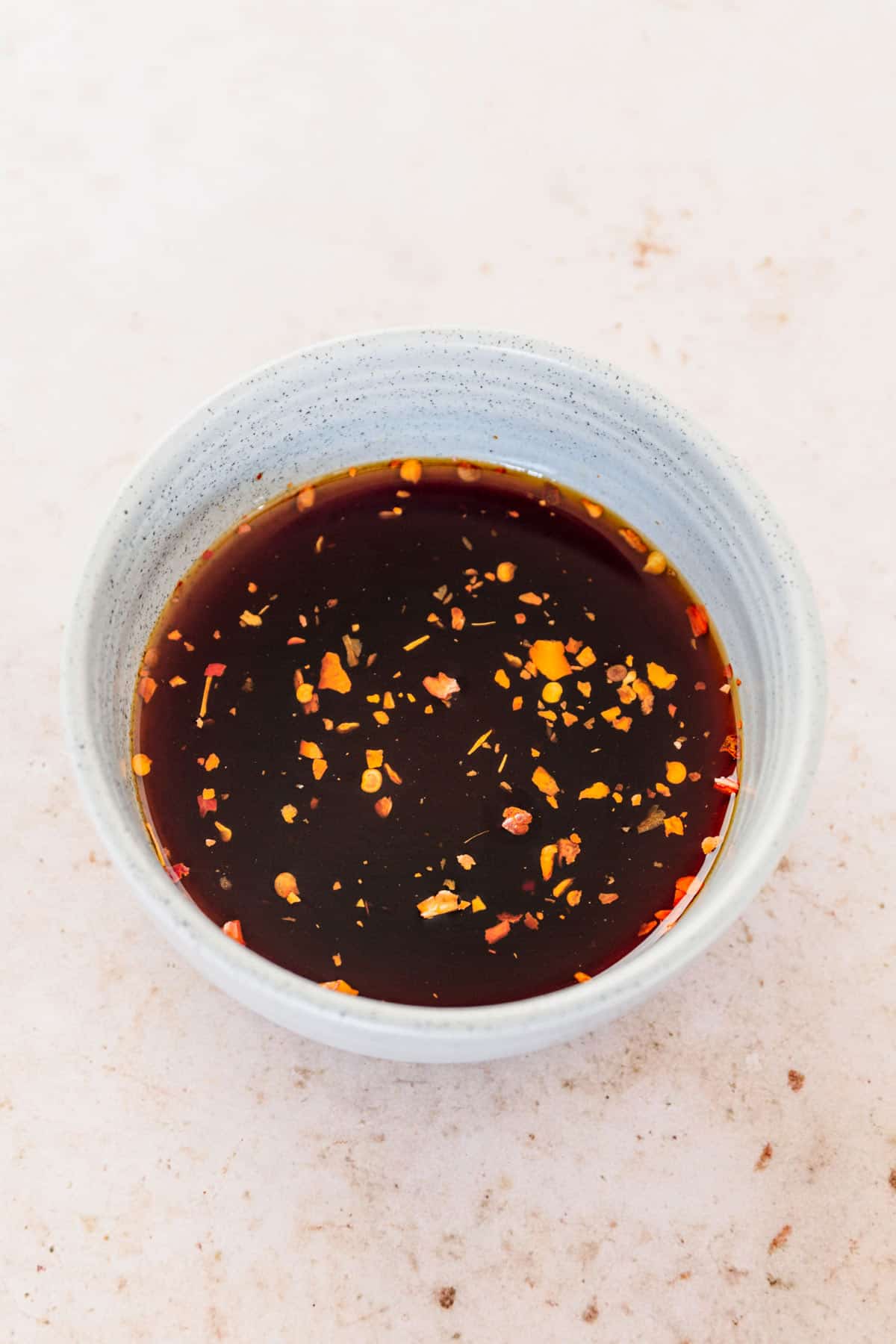
In a medium or large pot, heat up about 4 cups of cold water, and once simmering, add in the ramen noodles.
Discard the seasoning packet for next time. You can also make ramen in microwave.
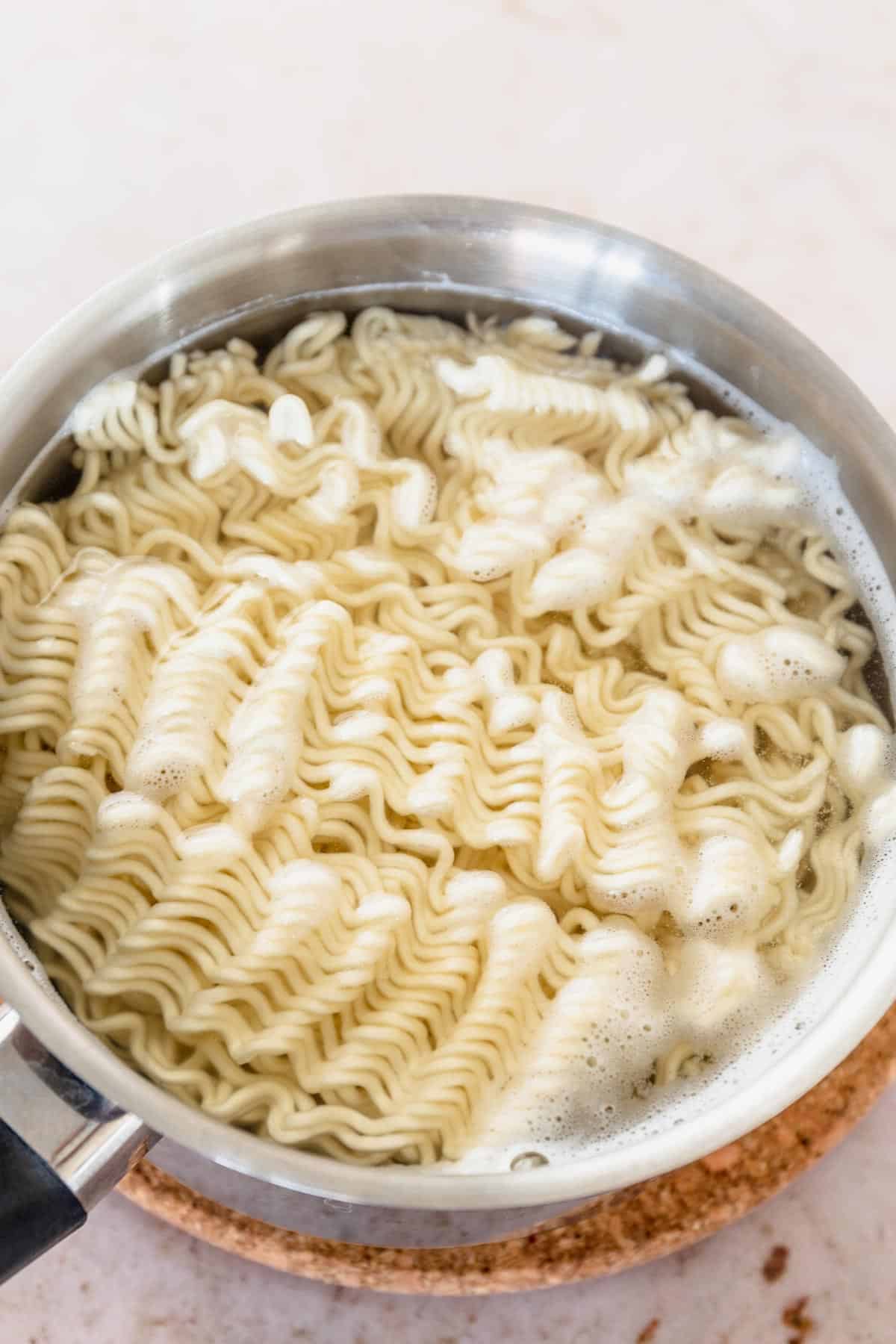
Remove from heat and let the noodles soften for about 2 minutes. Rinse and drain, leaving about 1 cup of noodle water for later.
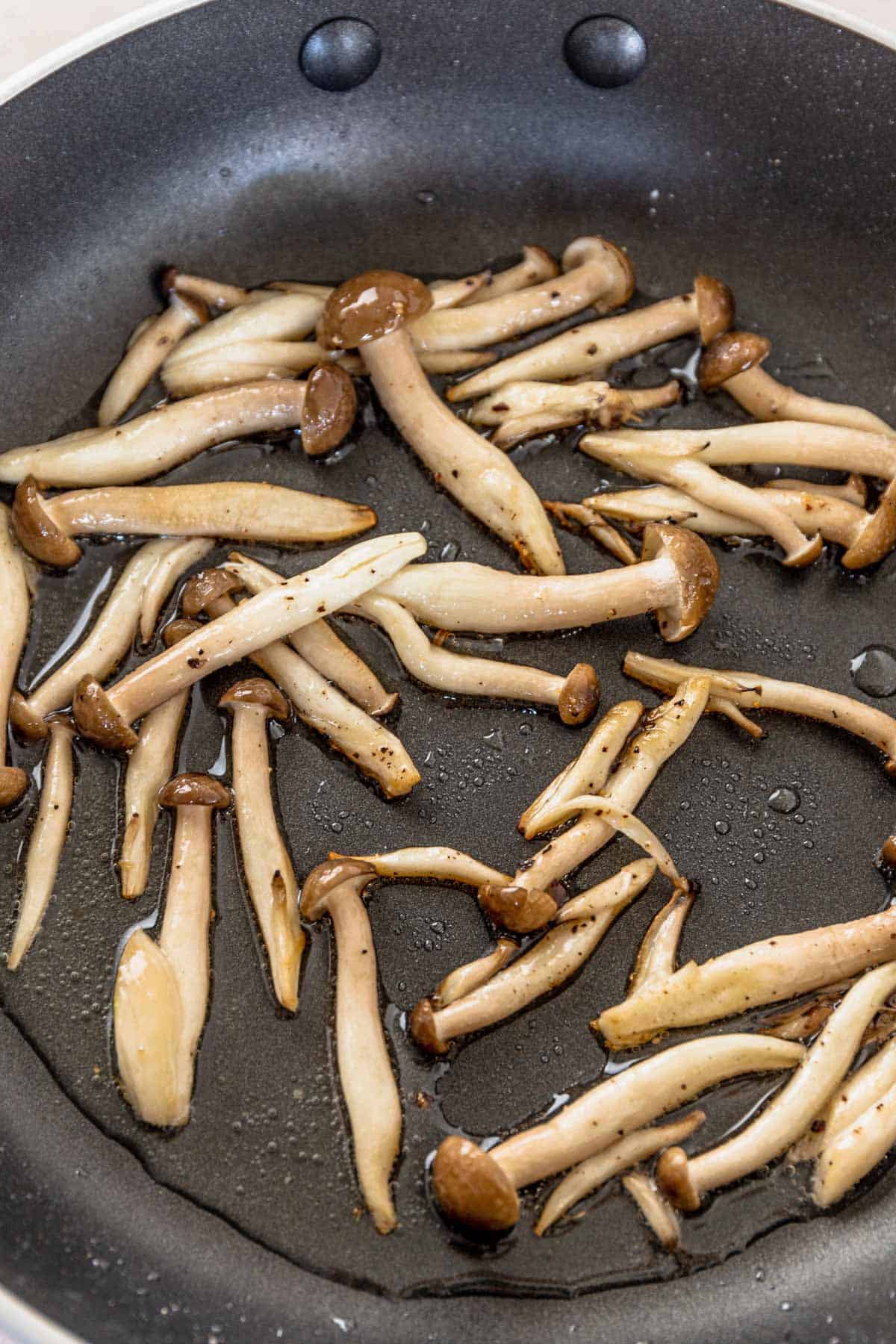
Meanwhile, heat some cooking oil over medium-high heat in a wok pan or large skillet.
Once the oil is very hot and sizzling in the frying pan, stir-fry the mushrooms for 2 minutes first, and then add the remaining veggies, cook for 2 minutes.
Follow with garlic and ginger.
Cook until just fragrant.
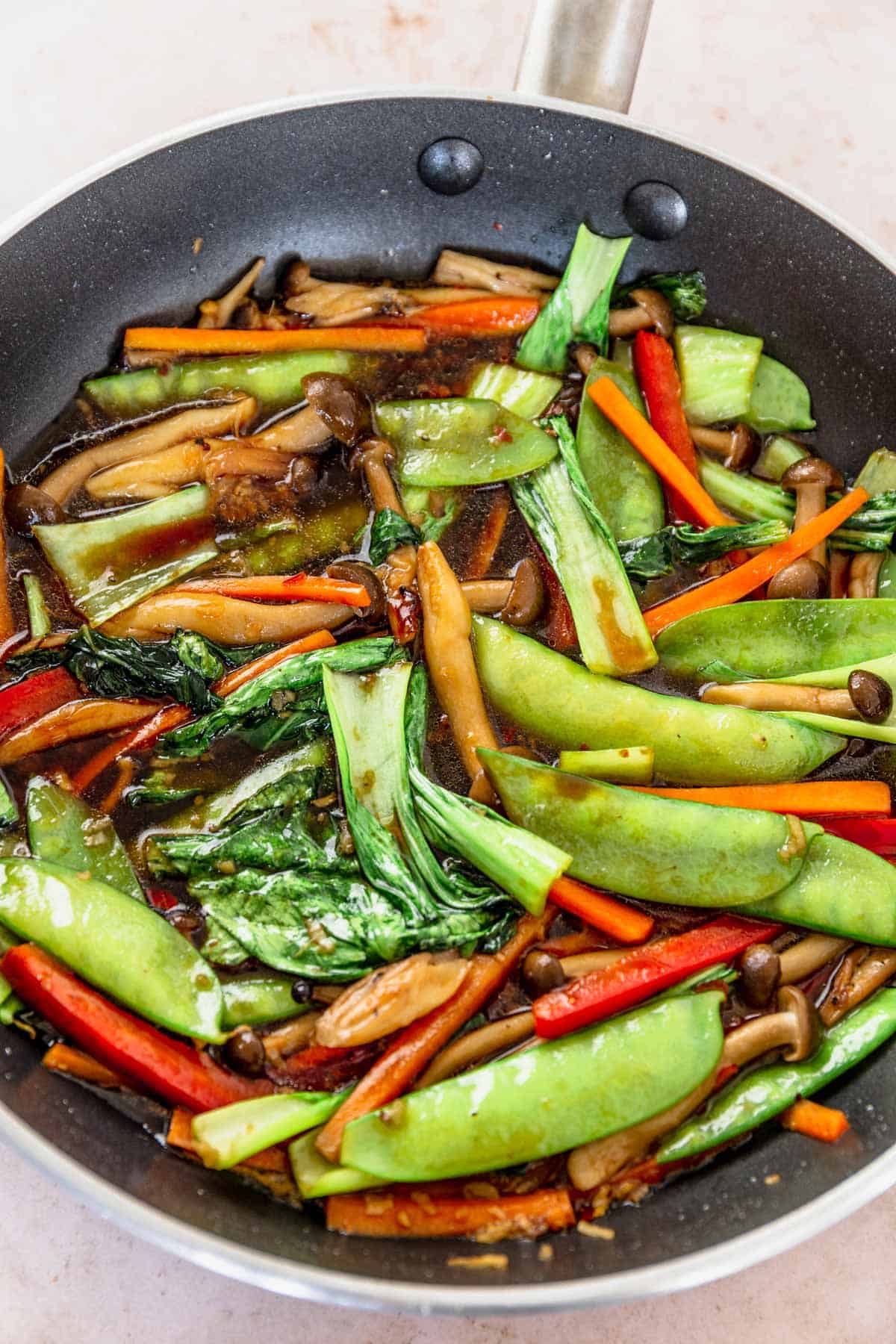
Lower the heat and pour in the sauce. Stir until veggies are coated and the sauce has thickened slightly.
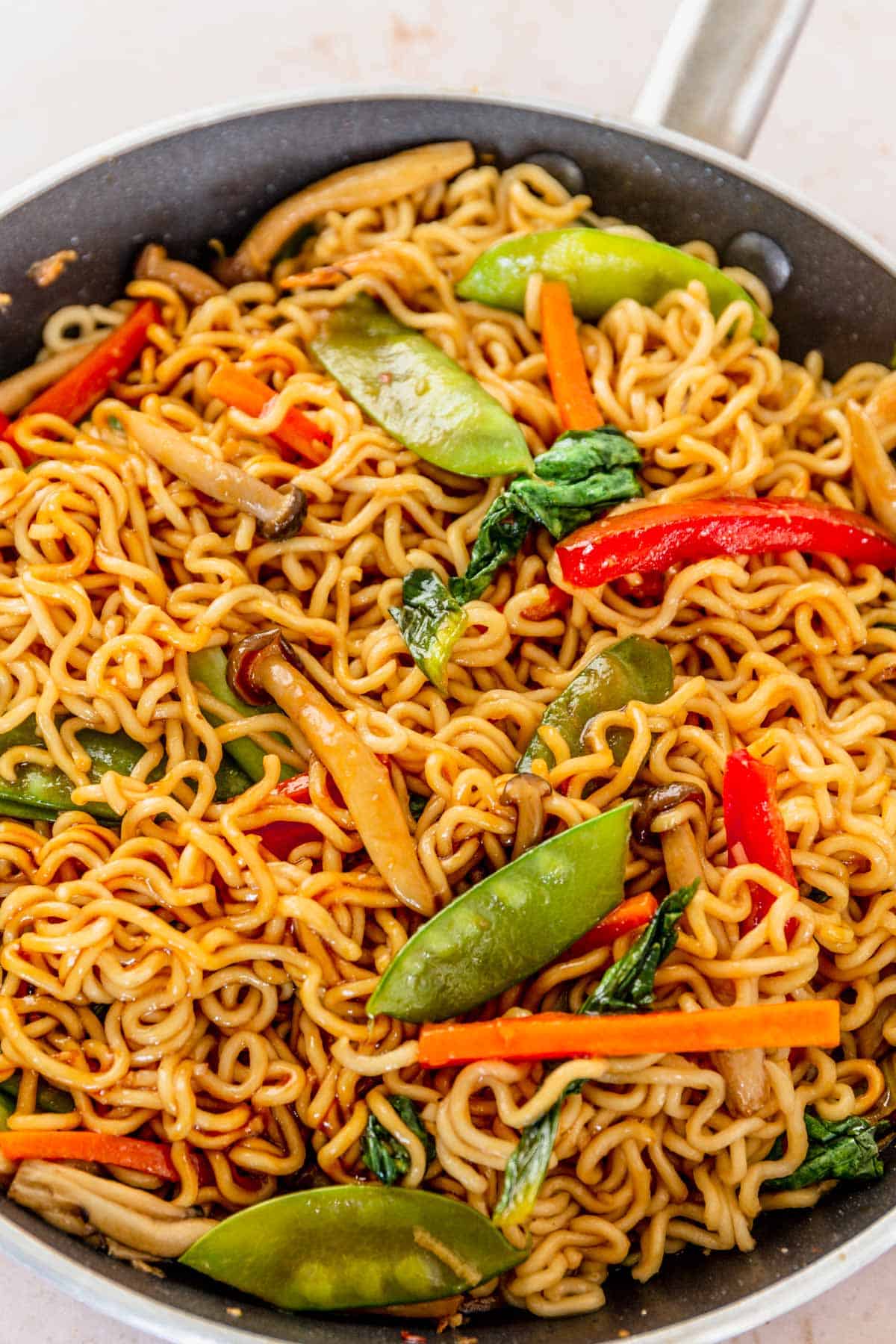
Stir in the noodles and mix to combine. If needed, add more ramen cooking water.
Serve ramen stir fry right away in soup bowls with freshly sliced scallions, sesame seeds, and more red chili flakes.
If you have more time, make this Easy Thai Peanut Sauce that you can drizzle over ramen and other tasty stir-fry recipes.
To make this ramen quick and easy, use a bag of pre-cut coleslaw or frozen vegetable mix instead of fresh veggies.
How to make ramen in the microwave
Pour 4 cups of water into a large microwave-safe bowl. Place ramen noodles into the bowl.
In this recipe, we don’t need the seasoning. Cover with a lid and microwave for 2-3 minutes until noodles are soft. Continue with the recipe instructions for the stir fry.
Making Ramen Less Spicy
Simply reduce or omit anything in the seasoning or sauce that could make this recipe less spicy vegetable ramen. Ramen does not have to be spicy at all.
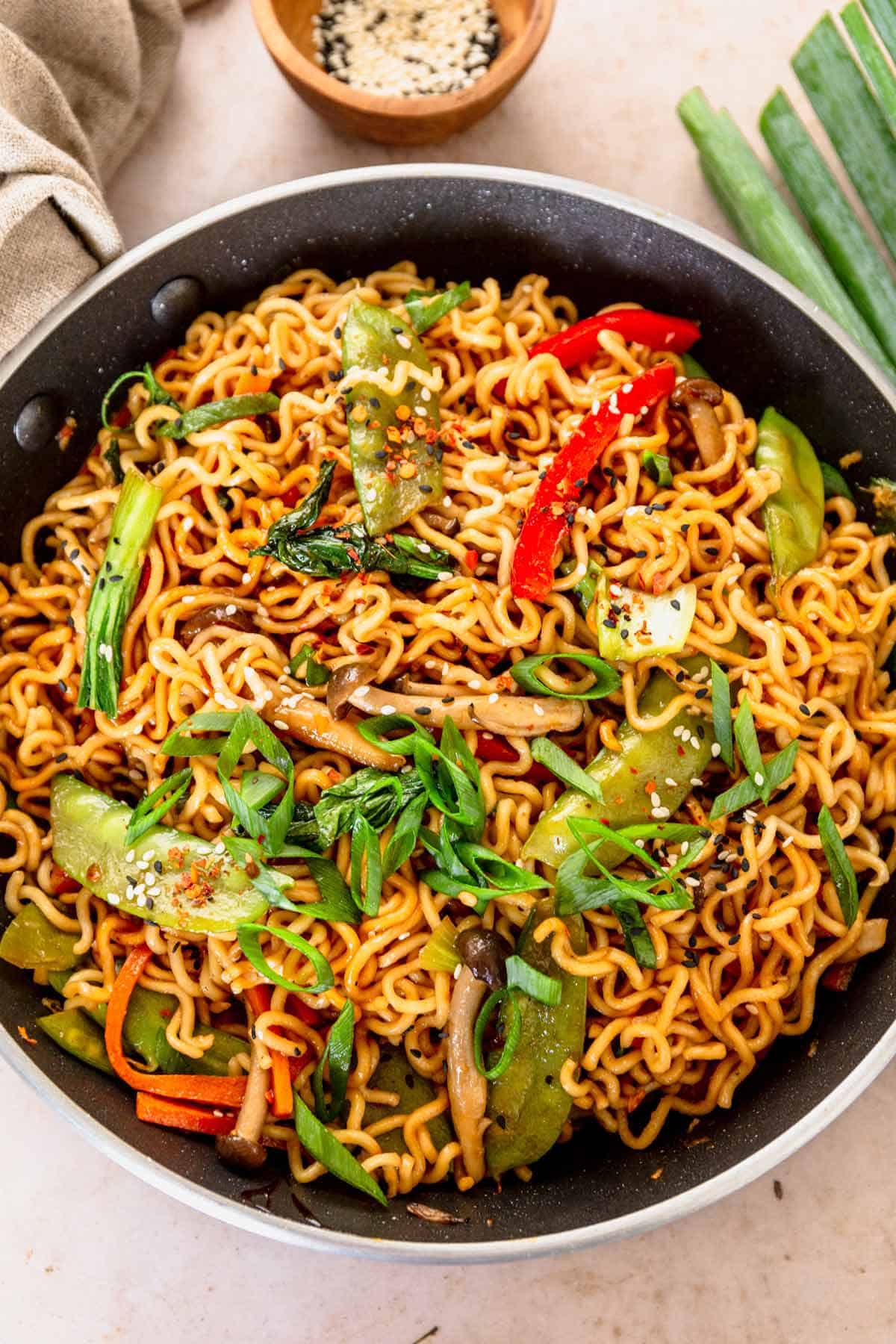
Tips
- For gluten-free ramen, use ramen made with rice flour, soba (buckwheat) noodles, or kelp noodles. There are also many gluten-free ramen noodles available in the market, but always check the ingredients list to make sure it is gluten-free certified.
- You won’t need to add any salt or pepper to the ingredients (other than when sauteeing the mushrooms), as the sauce already contains a high amount of sodium.
- Cut your vegetables into similar size pieces, this will ensure that they cook evenly.
- Miso pasta will add lots of new flavors, use 1-2 teaspoons if you have it.
- Other vegetables and add ins that I like to add: bean sprouts, snap peas, water chestnuts, cashews, broccoli florets, spring onion, green beans, or baby corn, beef, pork, chicken, tofu, almonds.
Preheat your pan or wok over high heat before adding the oil. This will prevent the vegetables from steaming instead of stir-frying.
How to Use Chopsticks for Ramen
Using chopsticks to eat ramen can be tricky because of the long, slippery noodles, but with a little practice, you can master the technique. Here are a few tips to help you:
- Hold one chopstick like a pencil with your thumb and index finger near the top. Hold the other chopstick between your thumb, index finger, and middle finger, with the tip resting on the base of your thumb.
- Use the chopstick in your dominant hand to pick up the noodles and the chopstick in your other hand to guide the noodles into your mouth.
- Hold the bowl close to your mouth and slurp the noodles gently to help cool them down and prevent them from getting too long.

Healthy Ramen Alternative
One healthy alternative to traditional ramen noodles is zucchini noodles, also known as "zoodles."
These can be made by spiralizing zucchini and used in place of wheat-based noodles in various dishes. Other alternatives include kelp noodles, shirataki noodles, and glass noodles made from mung bean or sweet potato starch.
Freezing and Storing Instructions
- Store any ramen stir fry leftovers refrigerated in ana airtight container for up to 4 days. Reheat in the skillet or microwave. But for your veggies to maintain the crisp texture avoid microwaving.
- Freezing. Cooked stir fry can be frozen for up to 3-4 months. Plain-cooked noodles can be frozen for up to 3-4 months as well. However, as these take literally minutes to cook I highly recommend avoiding freezing those.
- To make ahead, you can cook the veggies, make the sauce and keep them separately refrigerated for up to 2-3 days. On the day, cook the noodles and add in the remaining ingredients.
What to serve with Ramen Stir Fry?
Ramen noodles are traditionally served in soups but for a long time they've become a popular stir-fry ingredient in countries of Japan, China, Indonesia, and Asia.
Toppings
To jazz up your ramen game, serve this stir fry with:
- green onions
- sesame seeds
- peanut sauce
- toasted nuts
- Sichuan pepper
- chili oil, red pepper flakes,
- condiments (Quick Pickled Radishes, Kimchi, Taco Slaw, Corn Relish.
Side Dishes
We like to add a boiled egg or fried egg along with extra protein sources such as cooked salmon, tofu, chicken, and pork.
- Spring Rolls
- Satay
- Cabbage slaw
Easy Stir Fry Recipes
Did you make this recipe? Please be sure to leave a rating and a comment below. Thank you!
📖Recipe

Ramen With Vegetables (Stir Fry)
Ingredients
Stir Fry
- 2 packages of ramen, about 6-7 oz
- 1 cup shimeji or shiitake mushrooms, rinsed and dried with a paper towel
- 1 cup cabbage, i used bok choy
- 2 teaspoons cooking oil, or sesame oil
- 1 cup bell peppers, sliced medium thin
- 1 heaping teaspoon of fresh garlic, minced or paste
- 1 cup snow peas or edamame
- 1 cup carrot, matchsticks
- ½ teaspoon ginger root, grated
For Serving
- green onion or scallions
- sesame seeds
- black pepper
For Sauce
- ¼ cup oyster sauce, thick kind
- ¼ cup water
- 1 teaspoon sesame oil
- ¼ teaspoon dark soy sauce or low sodium soy sauce, any
- ¼ teaspoon red pepper flakes or cajun seasoning
Instructions
- In a small bowl, whisk the sauce ingredients until combined. The sauce will separate a little due to the sesame oil, but it is fine, whisk until most of it is combined. Set aside.
- In a medium or large pot, heat up about 4 cups of cold water, and once simmering, add in the ramen noodles. Discard the seasoning packet for next time. Remove from heat and let the noodles soften for about 2 minutes. Rinse and drain, leaving about 1 cup of noodle water for later.
- Meanwhile, heat some cooking oil over medium-high heat in a wok pan or large skillet. Once the oil is very hot and sizzling in the frying pan, stir-fry the mushrooms for 2 minutes first, and then add the remaining veggies, cook for 2 minutes.
- Follow with garlic, and ginger. Cook until just fragrant.
- Lower the heat and pour in the sauce. Stir until veggies are coated and the sauce has thickened slightly. Stir in the noodles and mix to combine. If needed, add more ramen cooking water.
- Serve ramen stir fry right away in soup bowls with freshly sliced scallions, sesame seeds, and more red chili flakes.
Notes
- For a gluten-free version, use ramen made with rice flour, soba (buckwheat) noodles, or kelp noodles. There are also many gluten-free ramen noodles available in the market, but always check the ingredients list to make sure it is gluten-free certified.
- You won’t need to add any salt or pepper to the ingredients (other than when sauteeing the mushrooms), as the sauce already contains a high amount of sodium.
- Can you freeze ramen noodles? Yes! The cooked noodles can be stored in an airtight container in the freezer for up to 6 months. Thaw them in the fridge or under running warm water (if plain cooked noodles) when ready to use.
- Reheat in a pan with oil or with freshly made stir fry. Thawed ramen noodles may lose some texture and become soft.
- Can you put ramen into the microwave?It’s possible to cook ramen noodles in a microwave-safe bowl, adding water and seasoning, and cook for 2-3 minutes, depending on your microwave power. But remember that texture and flavor may vary from the traditional boiling method.
Want more? Subscribe to my newsletter, and follow Cookrita on Pinterest, Facebook, or Instagram for all the latest updates!

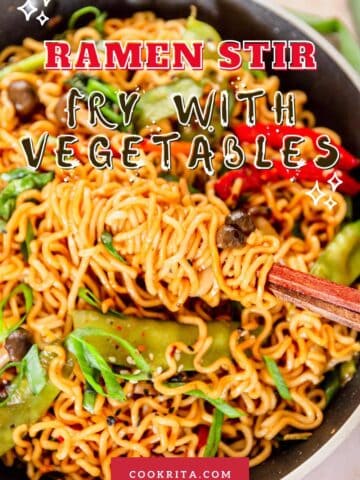


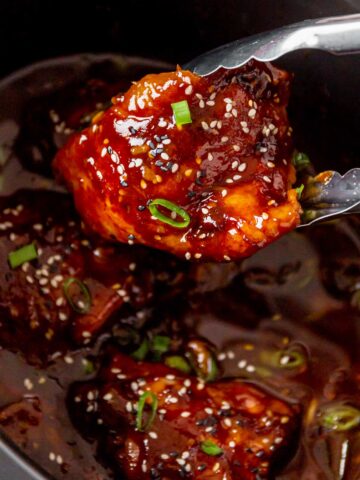
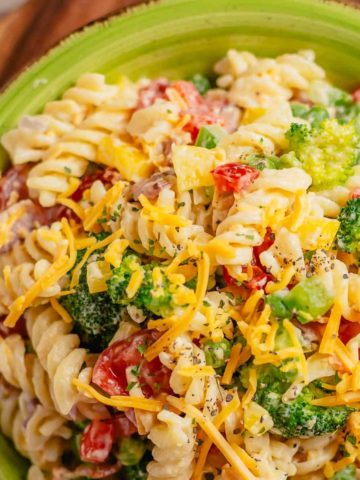
Easy 30-minute stir fry ramen with vegetables.
Easy and quick ramen with vegetables! We like to add pork!
thank you Laila!